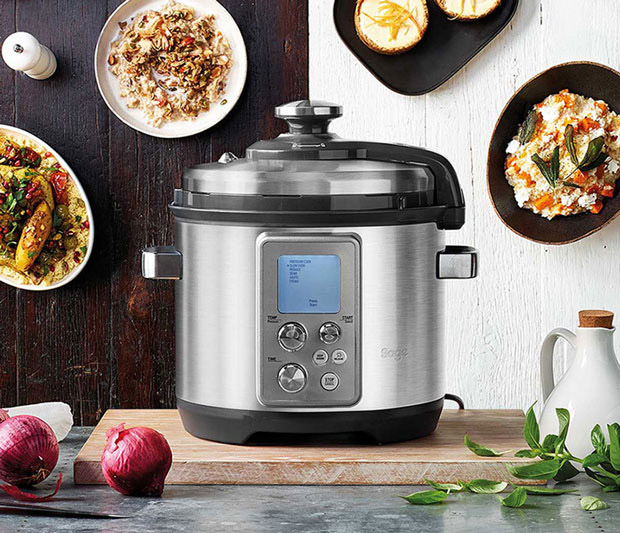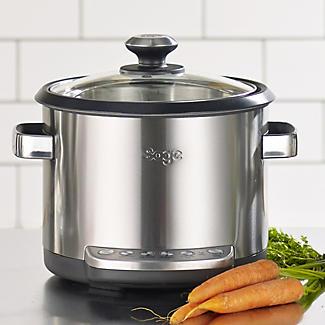The Sage Rice Cooker is your ticket to culinary creativity. This device offers more than just perfectly cooked rice—it’s a gateway to a variety of dishes. This all-inclusive guide will help you understand its features, use it effectively, maintain it properly, and troubleshoot common issues.
Initial Setup
Before using your Sage Rice Cooker, it’s important to clean it thoroughly. Wipe the outer surface with a soft, damp cloth. The inner cooking pot, lid, and steam vent cap should be washed with warm water and mild dish soap. To avoid scratching the surface, steer clear of abrasive cleaners or scrubbing pads. Ensure all parts are thoroughly dry before reassembling.

Understanding the Features of Your Sage Rice Cooker
The Sage Rice Cooker is equipped with several features designed for your convenience:
- White Rice: This setting is optimized for cooking all types of white rice.
- Brown Rice: Brown rice needs a longer cooking time and more water, which is accounted for in this setting.
- Mixed Rice: Use this setting when you’re cooking rice with other ingredients.
- Quick Cook: This fast-cooking option is perfect for when you need to save time.
- Steam: This feature allows you to steam vegetables, fish, and more.
Additional features include:
- LCD Display: This displays the selected program, the remaining cooking time, and the current time.
- Keep Warm: This function automatically keeps rice warm after it’s cooked.
- Reheat: This feature reheats leftover rice while preserving its quality.

Operating Your Sage Rice Cooker
- Measure Your Rice: Use the included measuring cup for accurate results. One cup is equivalent to one serving.
- Rinse the Rice: Rinse the rice under cool water in the cooking pot until the water runs clear to remove excess starch and improve the texture and taste of your rice.
- Add Water: Fill water up to the corresponding line inside the cooking pot. For example, if you’re cooking two cups of rice, fill water up to the ‘2’ line.
- Set the Cooker: Place the inner cooking pot into the main body, ensuring it sits flat. Close the lid, plug in the cooker, select the desired menu setting, and press ‘Start’.
- Wait and Enjoy: Once the cooking cycle is complete, the rice cooker will automatically switch to ‘Keep Warm’ mode. Let the rice rest for about 15 minutes before serving to achieve the best texture and flavor.
Expert Tips
- To make your rice fluffier, let it soak in water for about 20-30 minutes before cooking.
- Use the ‘Steam’ function to make healthy steamed side dishes like vegetables or fish.
- The ‘Mixed Rice’ setting is ideal for dishes like pilaf or biryani, where rice is cooked with other ingredients.

Maintenance and Cleaning
Regular cleaning is crucial to maintaining your Sage Rice Cooker’s performance and longevity. Clean the inner cooking pot, lid, and steam vent cap after each use. Every few months, gently clean the main body with a damp cloth and mild detergent. Remember, never immerse the main body in water or place it in the dishwasher.
Always unplug your rice cooker when not in use for safety and energy conservation.
Troubleshooting
If you encounter any problems with your Sage Rice Cooker, consider the following common issues and their solutions:
- Rice is undercooked or too dry: This could be because you didn’t add enough water. Refer to the water level lines inside the cooking pot.
- Rice is overcooked or too soft: This might be due to adding too much water. Again, refer to the water level lines.
- Rice cooker does not start cooking: Ensure the inner cooking pot is properly placed and the lid is securely closed.

Conclusion
Your Sage Rice Cooker is a multi-functional kitchen asset that can enhance your cooking experience. With a thorough understanding of its features and proper maintenance, you’ll be able to enjoy perfectly cooked rice and a variety of dishes for years to come.




